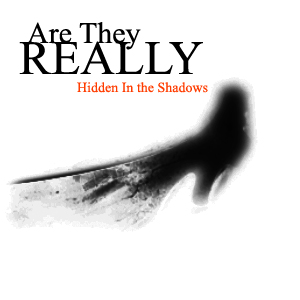Series: Hidden in the Shadows
Are they Really Hidden in the Shadows
Volume 1: Who and Why?
Article and graphic by Lou Levi

When the Muggles called werewolves 'folklore' there was outrage amongst wizarding communities and those creatures that have come to earn the name. Before we get into the sticky stuff, let's consider the following question: What is a werewolf? It is essentially a human being which changes when the moon is full. Some werewolves are able to change shape at will, others who have been bitten or inherited the condition are under involuntary transformation (e.g. the rising of a full blue moon). The name werewolf is traditionally derived from Old English. "Wer" translates to "man" and "wulf" forms the basis of the modernized English version of "wolf." In some cases, wolf may be illustrated by the word beast.
In what Muggles call Norse mythology, there is a chronicle of the legends of Ulfhednar and the Völsunga saga; they represent a race of vicious fighters, better known as the berserkers. They used to dress in wolf hide and channel the spirits of these animals, enhancing their own power and ferocity in battles. They were known for being immune to both pain and killings. Similar to Norse mythology, Latvian mythology states that a Vilkacis is a person who changes into a wolf-like monster. But we mustn't get shape-shifters mixed up with the delicate term of werewolf.
This now brings us to Fenrir Greyback, who is undoubtedly the most feared werewolf in the wizarding world, and would be in the Muggle world if they weren't so ignorant. Greyback's sole purpose in life is to contaminate others and convert them with Lycanthropy (which is essentially the highest power one can possess to inflict the human transformation to a wolf–this will be discussed in the next installment). The unusual thing about Greyback is that he prefers his tasty morsels to be children, or rather, "fresh and vulnerable." It is suspected that Greyback is a cannibal, as he has admitted to liking the taste of flesh and blood whilst still in his human state.
So, I'm sure you're thinking, who is this Greyback fellow and why would he want to kill children? Simple answer is that it is there as an ulterior motive. Greyback's "talents" can be used by Lord Voldemort, with whom Greyback has sided with. Greyback attacks those who do not agree with Voldemort's vicious plans; he focuses mainly on their children. There are many he has attacked; those afflicted with the curse remain so.
Remus Lupin is one of the many attacked. When he was just a little fellow, he was cruelly infected by Greyback. We learn more of this as Remus Lupin is discovered taking the Wolfsbane potion, which Snape kindly brews for him. Bill Weasley had been struck by Greyback in the famous Battle of Hogwarts. It has been noted by St. Mungo's professionals that although Greyback was still in his human form when the attack happened, Mr. Weasley developed some behaviors closely related to werewolves. Hospital officials are glad that the attack wasn't as severe as it could have been, and they still do not know whether his transformation will be complete. There is a fine line between having the characteristics of a wolf and being a werewolf. Sometimes the line is blurred by the public's opinion. There is no sympathy for those with the condition.
The whereabouts of Greyback after his treacherous battle at Hogwarts are unknown. Most suspect he just disappeared, like Voldemort. It is known that evil hides in the shadows until its power is restored by sucking the life from pitiful souls.
In the next edition of Are they Really Hidden in the Shadows, we will discuss Lycanthropy in depth, tune in for Volume 2 next time!


